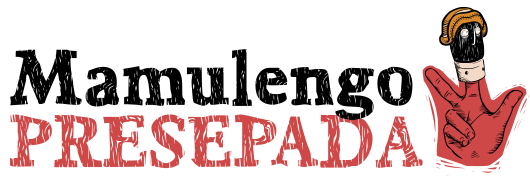nationalfolkfestival.com

“I don’t speak Portuguese, I don’t speak English: I speak puppet,” says mamulengueiro Chico Simões. A joyous cacophony surrounds the traditional Brazilian mamulengo puppet theater, whose many languages include the 16th-century theatrical tongue called Grammelot, a structured form of gibberish designed to communicate across cultures, as well as the universal language of human emotion, and the creative give-and-take between a masterful performer and enthusiastic audience.
Mamulengo is a puppet tradition from northeastern Brazil. Although the origin of the name is subject to debate, one prominent theory has it coming from the Portuguese mão molenga, meaning “soft hand,” a suitable attribute for a deft puppeteer like Simões. Mamulengo took shape during the colonial era, and has obvious connections to European puppet genres, such as the English Punch and Judy shows, the Italian pulcinella, and the French guignol, that are rooted in the Italian commedia dell’arte of the 16th century. The form likely derived out of this European tradition through cultural influences that accompanied Portuguese colonization. Mamulengo also weaves in African and indigenous aesthetic and narrative elements to make a thoroughly Brazilian art form. Among its primary characters is the trickster figure Benedito the Vaquiero, a cowboy, who bests a series of opponents, from the mythological bull Bumba-meu-boi to human adversaries who just might symbolize the forces arrayed against common people throughout history. Mamulengo is a raucous spectacle for children, but it contains social commentary as well. As such, Simões describes his puppetry as traditional, which he views as alive, improvisatory, and evolving, rather than a “folkloric” form preserved only to recall the past.
Chico Simões began studying mamulengo in 1981 from mestres (master puppeteers) in the Brazilian countryside where the tradition is still practiced, and founded his own puppet theater, the Mamulengo Presepada, in 1985. He has become an international ambassador for this tradition, teaching about its history and performing thousands of puppet plays worldwide, from street corners to prestigious puppetry festivals. At home in Taguatinga, he directs the cultural center Ponto de Cultura Invenção Brasileira, which works with the mestres of the region’s traditions to mobilize the arts for social change. Simões describes mamulengo as “a profession and a mission inherited from the masters of this tradition. It is also an effective means of holding up a mirror to the public. By identifying with the characters, their stories, their passions and their creative spirit, the spectator discovers the possibility of confronting life with creativity and humor.”
76th National Folk Festival (Festival Nacional do Folclore) (Greensboro, N.C.)
Informações para divulgação dos artistas na mídia/ redes sociais e atualizações
NOME DO EVENTO76th National Folk Festival
DATAS 9 a 11 de setembro de 2016
LOCALGreensboro, Carolina do Norte (centro), 2015 – 2017
DESCRIÇÃO Evento grátis ao ar livre (chova ou faça sol)
HISTÓRIA
Primeiramente apresentado em 1934, o Festival Nacional do Folclore é o mais antigo e mais longo festival multicultural de arte tradicional.

